Abstract
Previous in vitro studies have shown that immune complexes (IC) that fix complement can bind to the C3b receptor on primate erythrocytes. The in vivo function of this erythrocyte receptor, however, is unknown. This study was undertaken to determine whether the binding of IC to erythrocytes in vivo might play a role in the removal of IC from the circulation. Baboons and rhesus monkeys were prepared with a catheter in the ascending aorta to infuse IC and in the abdominal aorta, renal, hepatic, and portal veins to monitor changes in binding and clearance of IC across kidney, liver, and spleen + gut, respectively. Autologous 51Cr-labeled erythrocytes were infused intravenously and allowed to equilibrate. Preformed IC (125I-labeled bovine serum albumin [BSA] rabbit anti-BSA) were then infused into the ascending aorta at a constant rate for 120 s. Blood samples were drawn at frequent intervals for 30 min from all catheters below the IC injection site. Each blood sample was then centrifuged on percoll to separate IC bound to erythrocytes from IC in plasma or bound to buffy coat cells. This resulted in an "erythrocyte fraction" beneath the percoll that contained the IC bound to erythrocytes, and a "plasma/buffy coat fraction" above the percoll that contained the IC in plasma and IC bound to buffy coat cells. Analysis of these data showed that the majority of the IC infused into the circulation rapidly became bound to erythrocytes. However, by 5 min after beginning the IC infusion, most of this IC load had been removed from the erythrocytes as they traversed the liver. In contrast, IC on erythrocytes did not deposit in kidney. The IC-bearing erythrocytes themselves were not trapped or detained by any organ. IC in the plasma/buffy coat fraction of blood were removed from the circulation but at a relatively low rate and almost entirely by the liver. These findings suggest that primate erythrocytes intercept large complement-fixing IC in the circulation causing the IC to adhere to the erythrocyte until th e IC-bearing erythrocyte traverses liver where the IC is deposited, and the erythrocyte is returned to the circulation. This primate erythrocyte-IC-clearing mechanism may be important in the protection against diseases mediated by deposition of circulating IC.
Full text
PDF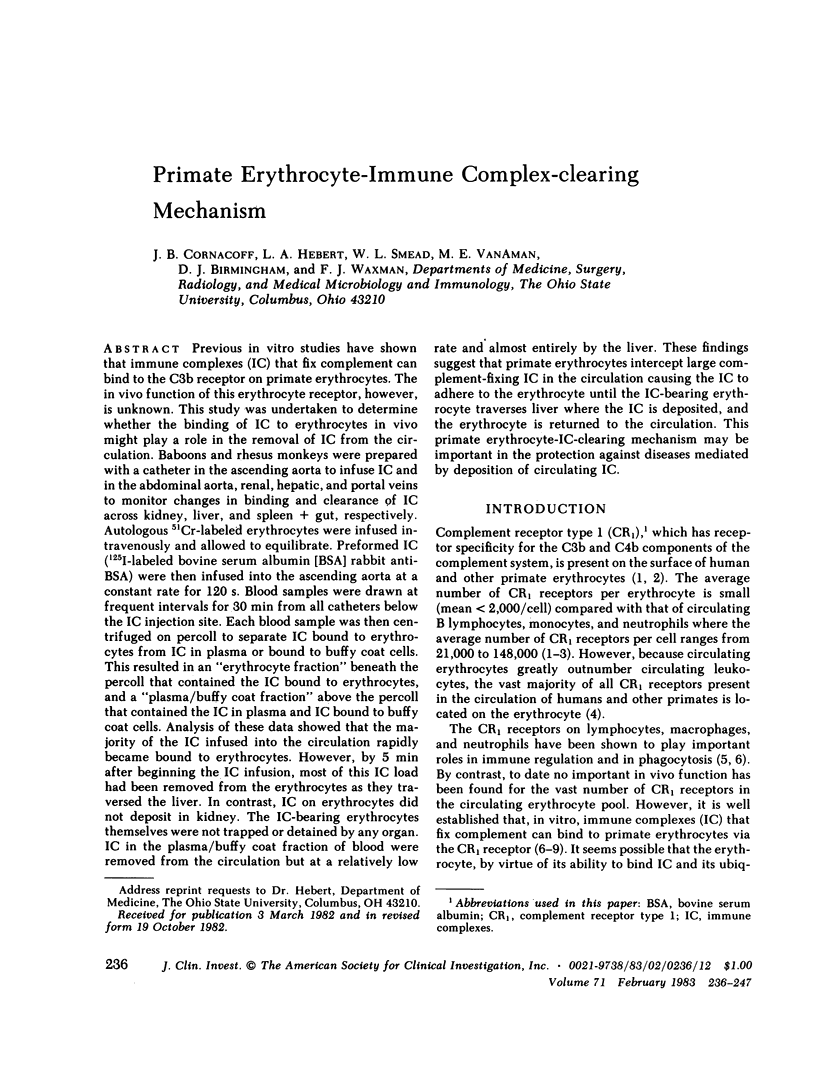
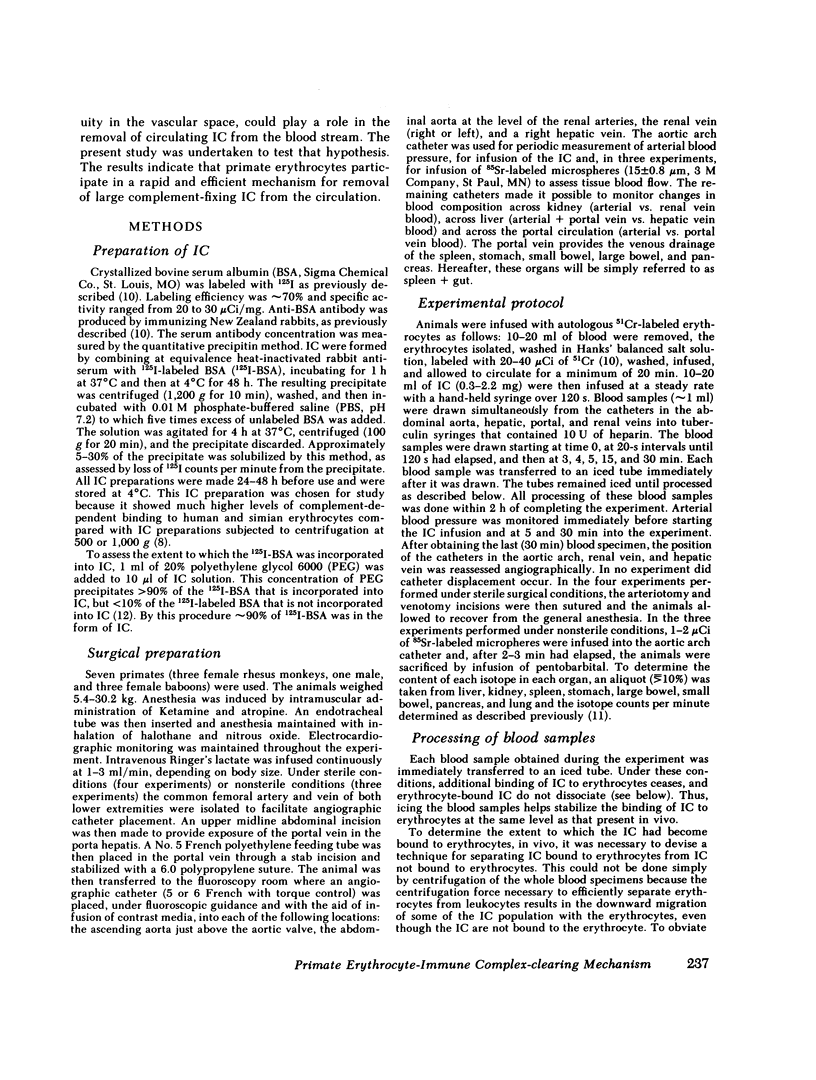
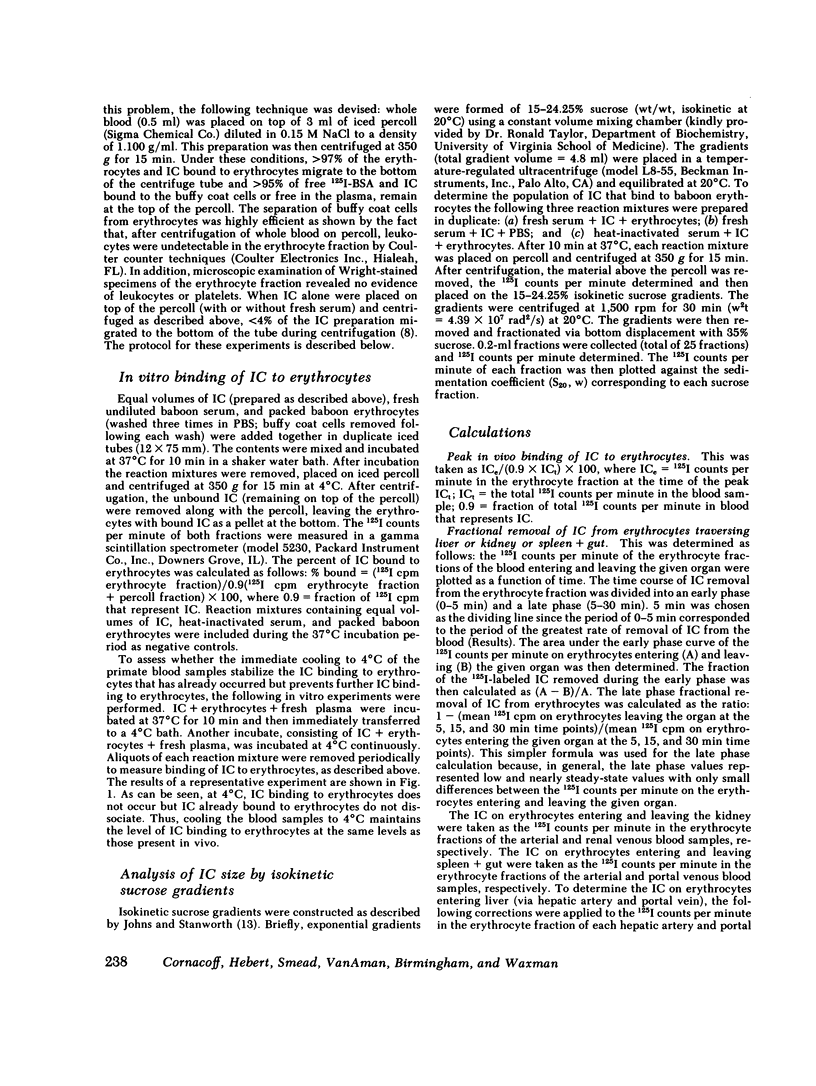
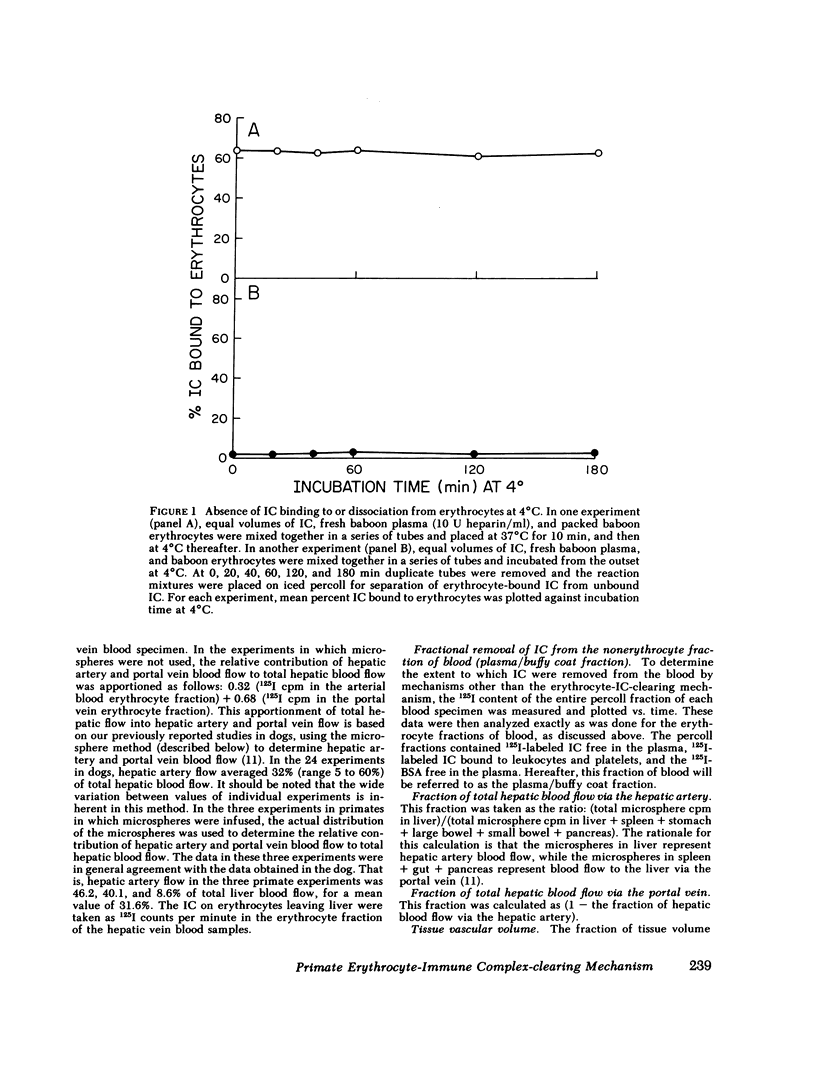
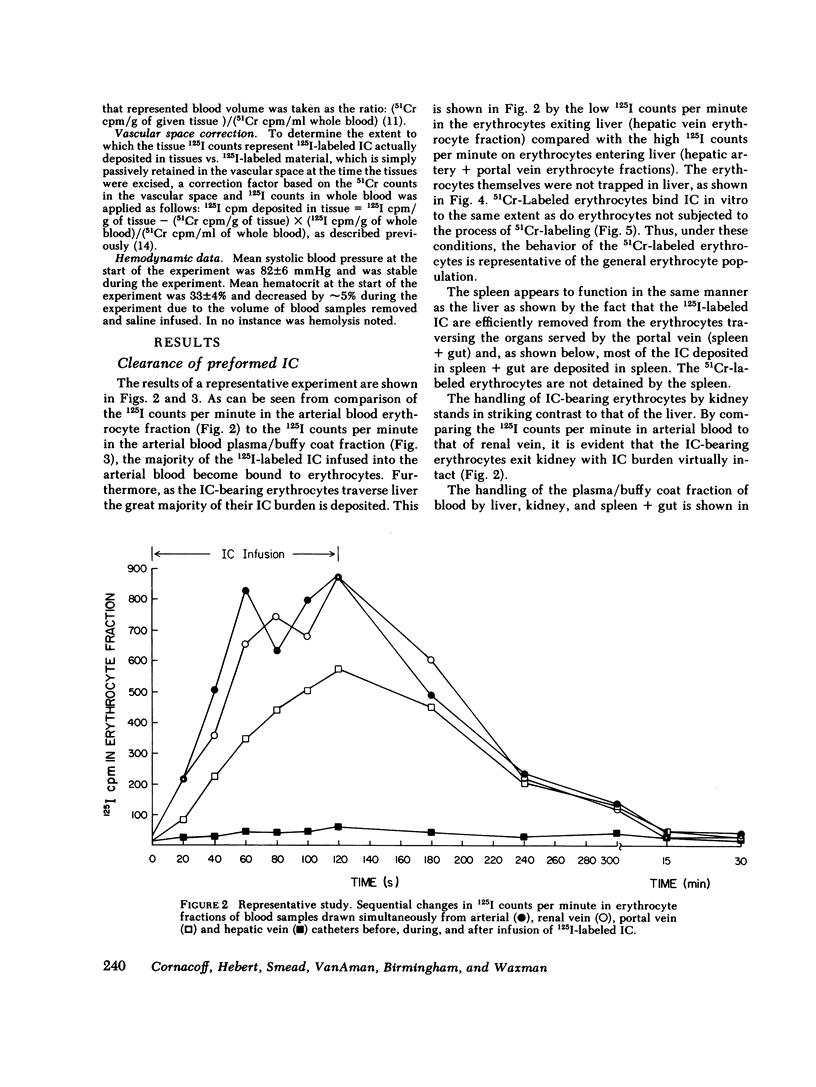
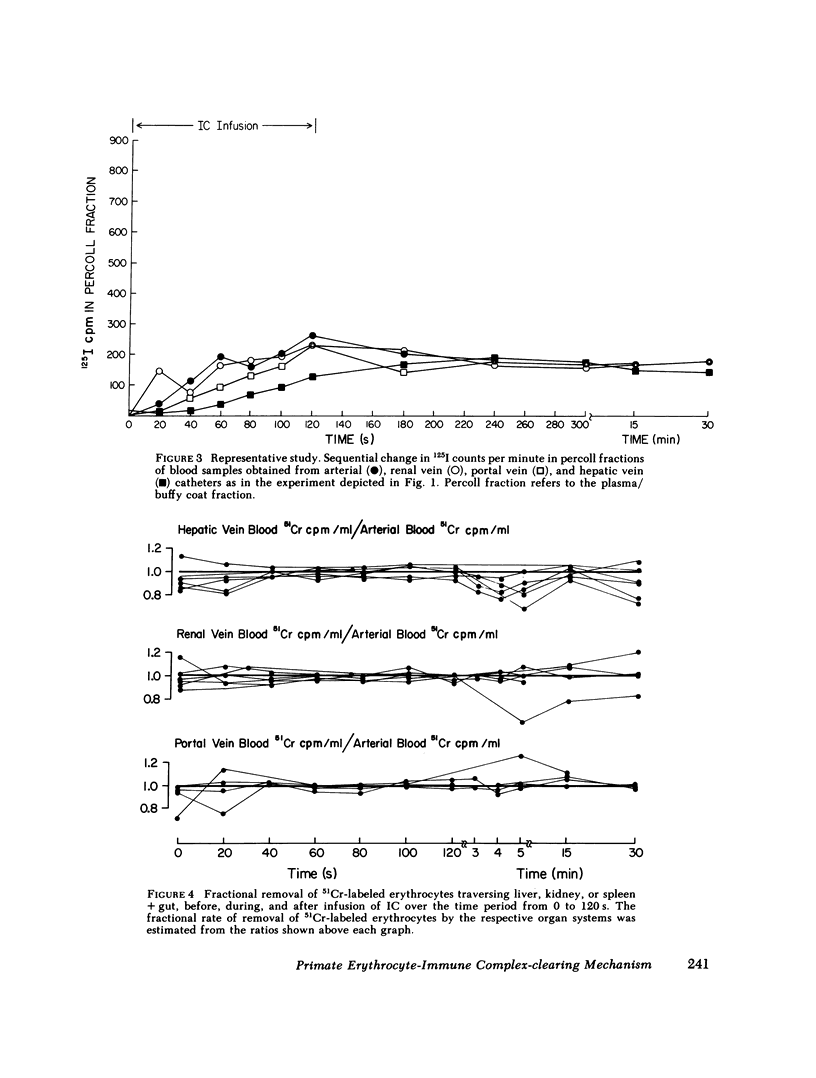
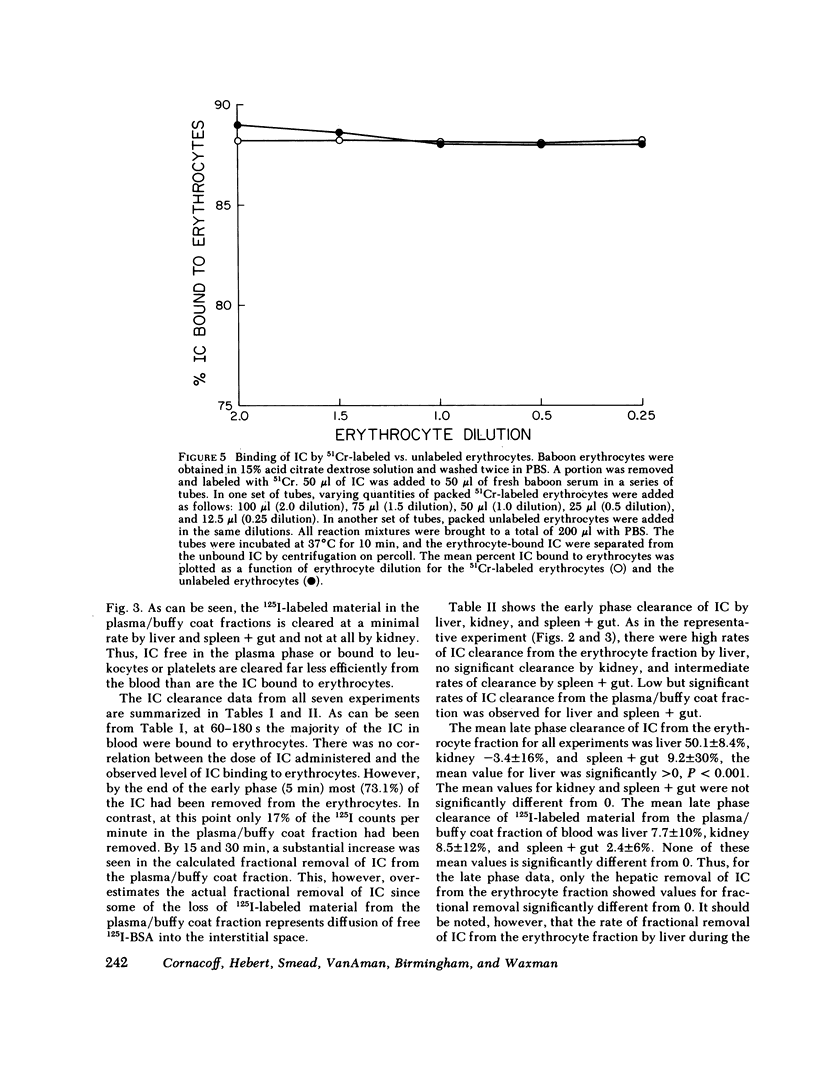
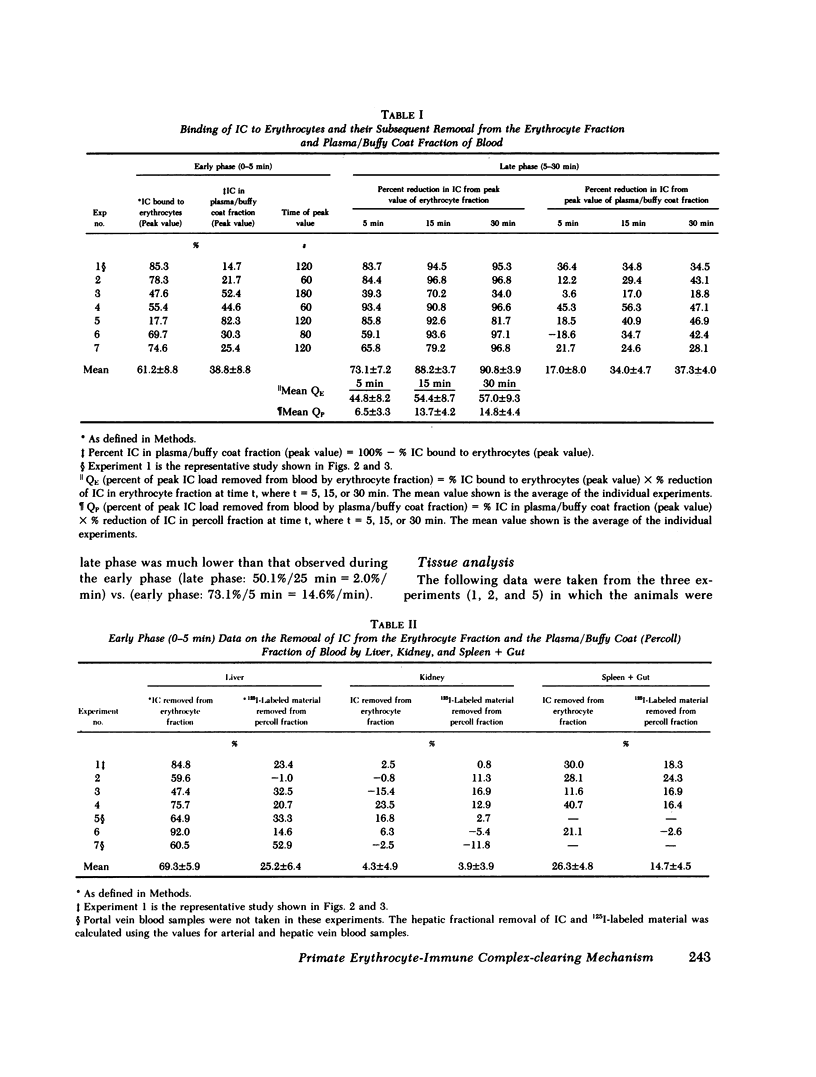
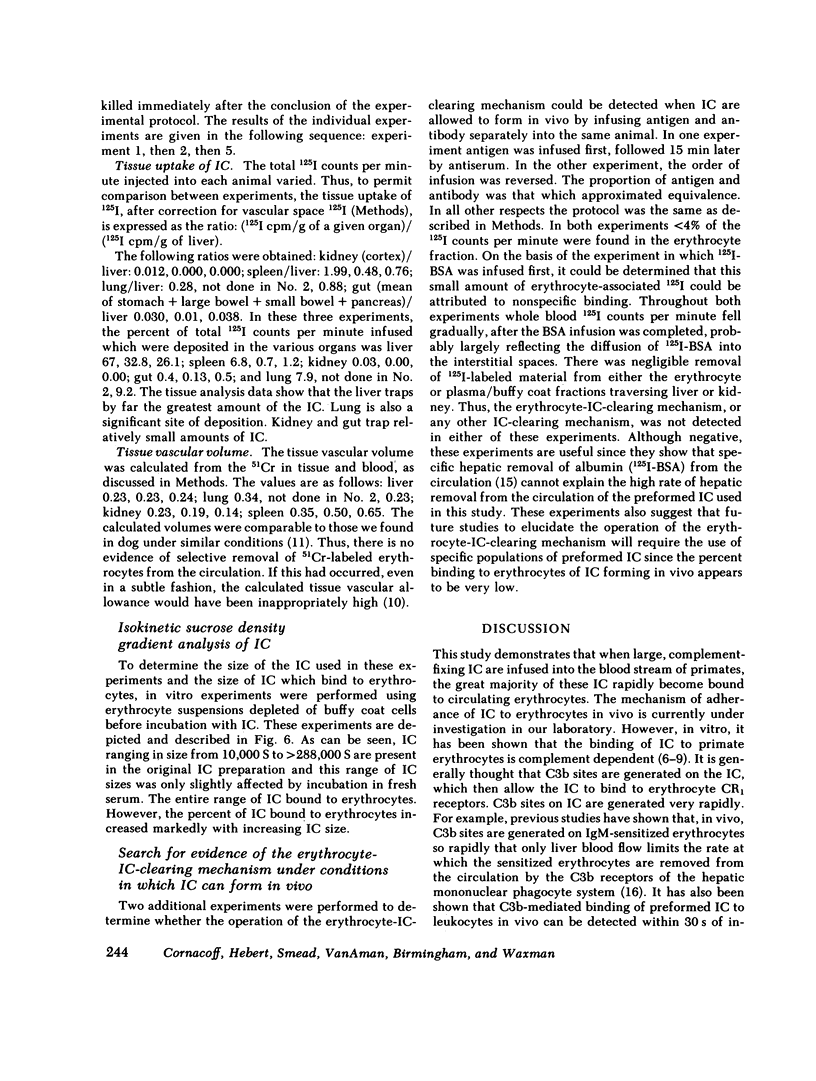
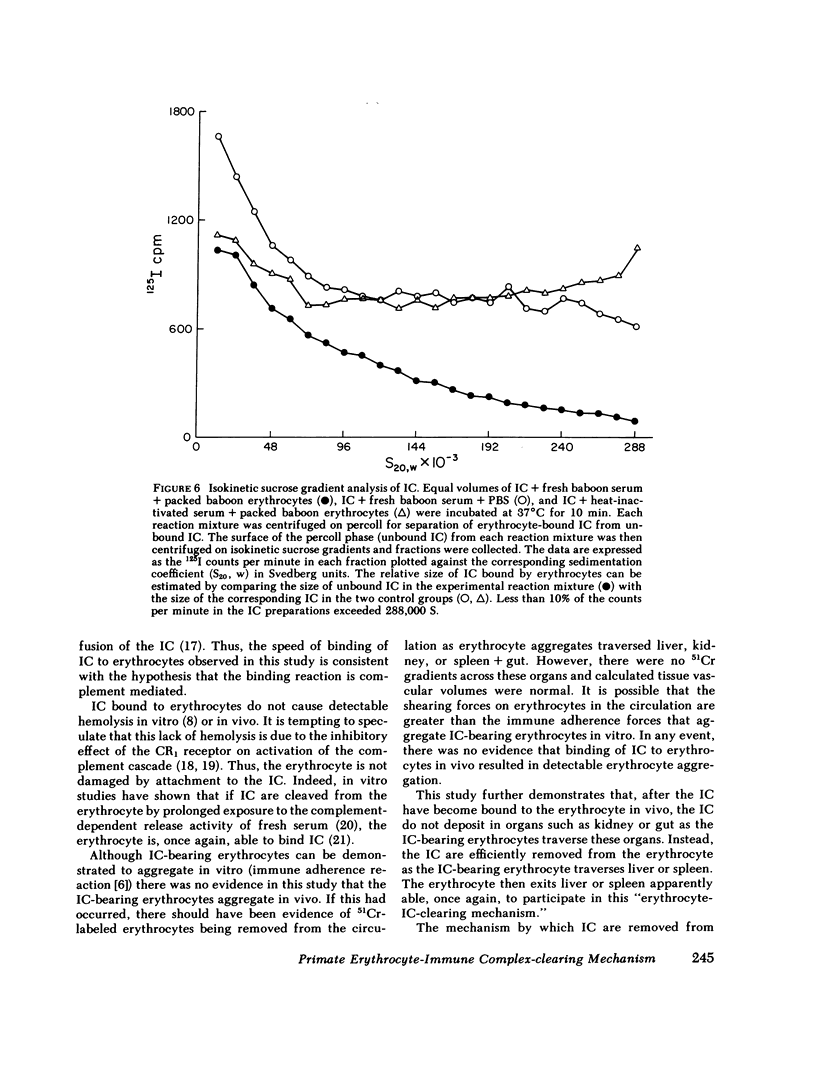
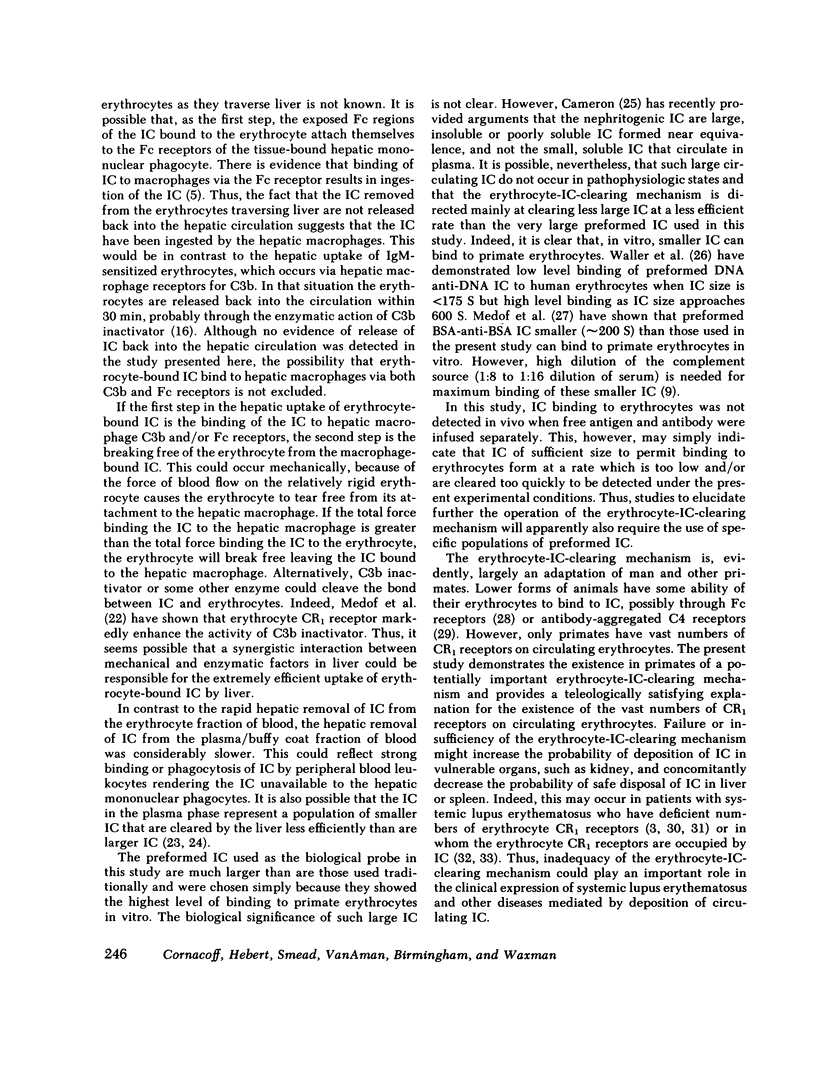
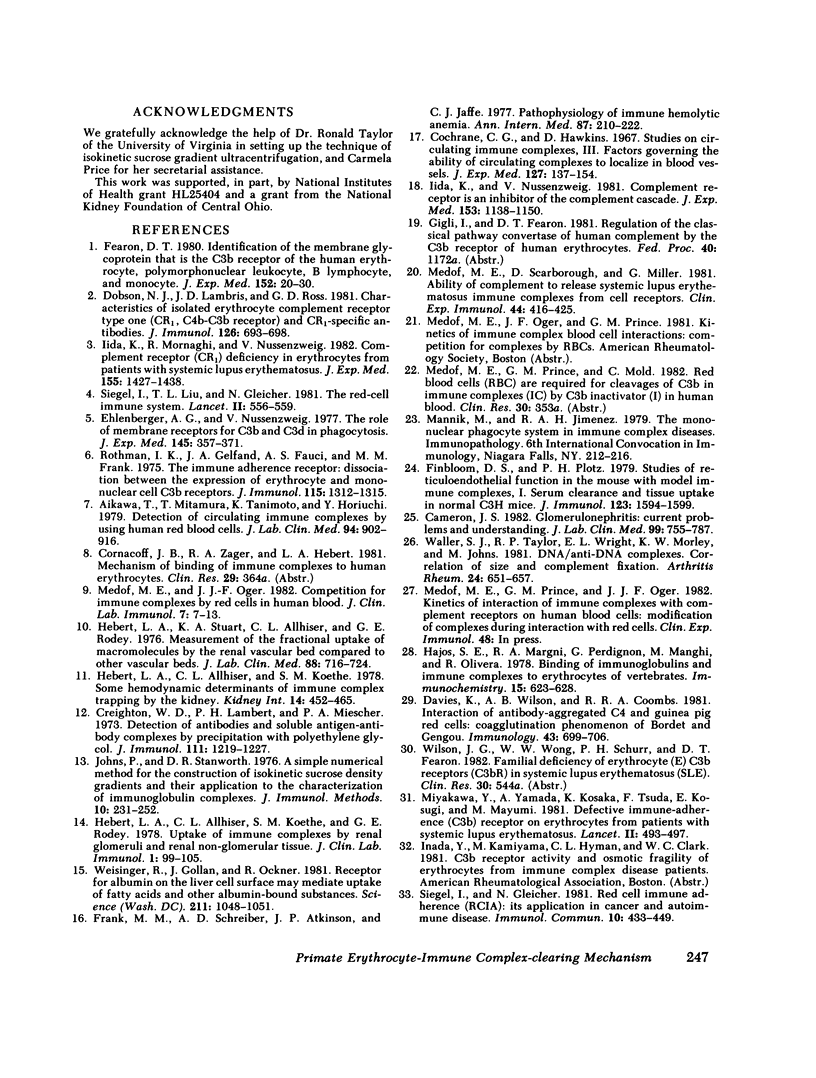
Selected References
These references are in PubMed. This may not be the complete list of references from this article.
- Aikawa T., Mitamura T., Tanimoto K., Horiuchi Y. Detection of circulating immune complexes by using human red blood cells. J Lab Clin Med. 1979 Dec;94(6):902–916. [PubMed] [Google Scholar]
- Cameron J. S. Glomerulonephritis: current problems and understanding. J Lab Clin Med. 1982 Jun;99(6):755–787. [PubMed] [Google Scholar]
- Cochrane C. G., Hawkins D. Studies on circulating immune complexes. 3. Factors governing the ability of circulating complexes to localize in blood vessels. J Exp Med. 1968 Jan 1;127(1):137–154. doi: 10.1084/jem.127.1.137. [DOI] [PMC free article] [PubMed] [Google Scholar]
- Creighton W. D., Lambert P. H., Miescher P. A. Detection of antibodies and soluble antigen-antibody complexes by precipitation with polyethylene glycol. J Immunol. 1973 Oct;111(4):1219–1227. [PubMed] [Google Scholar]
- Davies K., Wilson A. B., Coombs R. R. Interaction of antibody-aggregated C4 and guinea-pig red cells: coagglutination phenomenon of Bordet and Gengou. Immunology. 1981 Aug;43(4):699–706. [PMC free article] [PubMed] [Google Scholar]
- Dobson N. J., Lambris J. D., Ross G. D. Characteristics of isolated erythrocyte complement receptor type one (CR1, C4b-C3b receptor) and CR1-specific antibodies. J Immunol. 1981 Feb;126(2):693–698. [PubMed] [Google Scholar]
- Ehlenberger A. G., Nussenzweig V. The role of membrane receptors for C3b and C3d in phagocytosis. J Exp Med. 1977 Feb 1;145(2):357–371. doi: 10.1084/jem.145.2.357. [DOI] [PMC free article] [PubMed] [Google Scholar]
- Fearon D. T. Identification of the membrane glycoprotein that is the C3b receptor of the human erythrocyte, polymorphonuclear leukocyte, B lymphocyte, and monocyte. J Exp Med. 1980 Jul 1;152(1):20–30. doi: 10.1084/jem.152.1.20. [DOI] [PMC free article] [PubMed] [Google Scholar]
- Finbloom D. S., Plotz P. H. Studies of reticuloendothelial function in the mouse with model immune complexes. I. Serum clearance and tissue uptake in normal C3H mice. J Immunol. 1979 Oct;123(4):1594–1599. [PubMed] [Google Scholar]
- Hajos S. E., Margni R. A., Perdigón G., Manghi M., Olivera R. Binding of immunoglobulins and immune complexes to erythrocytes of vertebrates. Immunochemistry. 1978 Sep;15(9):623–628. doi: 10.1016/0161-5890(78)90034-2. [DOI] [PubMed] [Google Scholar]
- Hebert L. A., Allhiser C. L., Koethe S. M. Some hemodynamic determinants of immune complex trapping by the kidney. Kidney Int. 1978 Nov;14(5):452–465. doi: 10.1038/ki.1978.150. [DOI] [PubMed] [Google Scholar]
- Hebert L. A., Stuart K. A., Allhiser C., Rodey G. E. Measurement of the fractional uptake of macromolecules by the renal vascular bed compared to other vascular beds. J Lab Clin Med. 1976 Nov;88(5):716–24716-24. [PubMed] [Google Scholar]
- Iida K., Mornaghi R., Nussenzweig V. Complement receptor (CR1) deficiency in erythrocytes from patients with systemic lupus erythematosus. J Exp Med. 1982 May 1;155(5):1427–1438. doi: 10.1084/jem.155.5.1427. [DOI] [PMC free article] [PubMed] [Google Scholar]
- Iida K., Nussenzweig V. Complement receptor is an inhibitor of the complement cascade. J Exp Med. 1981 May 1;153(5):1138–1150. doi: 10.1084/jem.153.5.1138. [DOI] [PMC free article] [PubMed] [Google Scholar]
- Johns P., Stanworth D. R. A simple numerical method for the construction of isokinetic sucrose density gradients, and their application to the characterisation of immunoglobulin complexes. J Immunol Methods. 1976 Mar;10(2-3):231–252. doi: 10.1016/0022-1759(76)90174-5. [DOI] [PubMed] [Google Scholar]
- Medof M. E., Oger J. J. Competition for immune complexes by red cells in human blood. J Clin Lab Immunol. 1982 Jan;7(1):7–13. [PubMed] [Google Scholar]
- Medof M. E., Scarborough D., Miller G. Ability of complement to release systemic lupus erythematosus immune complexes from cell receptors. Clin Exp Immunol. 1981 May;44(2):416–425. [PMC free article] [PubMed] [Google Scholar]
- Miyakawa Y., Yamada A., Kosaka K., Tsuda F., Kosugi E., Mayumi M. Defective immune-adherence (C3b) receptor on erythrocytes from patients with systemic lupus erythematosus. Lancet. 1981 Sep 5;2(8245):493–497. doi: 10.1016/s0140-6736(81)90882-5. [DOI] [PubMed] [Google Scholar]
- NIH conference. Pathophysiology of immune hemolytic anemia. Ann Intern Med. 1977 Aug;87(2):210–222. doi: 10.7326/0003-4819-87-2-210. [DOI] [PubMed] [Google Scholar]
- Rothman I. K., Gelfand J. A., Fauci A. S., Frank M. M. The immune adherence receptor: dissociation between the expression of erythrocyte and mononuclear cell C3b receptors. J Immunol. 1975 Nov;115(5):1312–1315. [PubMed] [Google Scholar]
- Siegel I., Gleicher N. Red cell immune adherence (RCIA): its application in cancer and autoimmune disease. Immunol Commun. 1981;10(4-5):433–449. doi: 10.3109/08820138109050708. [DOI] [PubMed] [Google Scholar]
- Siegel I., Liu T. L., Gleicher N. The red-cell immune system. Lancet. 1981 Sep 12;2(8246):556–559. doi: 10.1016/s0140-6736(81)90941-7. [DOI] [PubMed] [Google Scholar]
- Waller S. J., Taylor R. P., Wright E. L., Morley K. W., Johns M. DNA/anti-DNA complexes: correlation of size and complement fixation. Arthritis Rheum. 1981 May;24(5):651–657. doi: 10.1002/art.1780240504. [DOI] [PubMed] [Google Scholar]
- Weisiger R., Gollan J., Ockner R. Receptor for albumin on the liver cell surface may mediate uptake of fatty acids and other albumin-bound substances. Science. 1981 Mar 6;211(4486):1048–1051. doi: 10.1126/science.6258226. [DOI] [PubMed] [Google Scholar]


